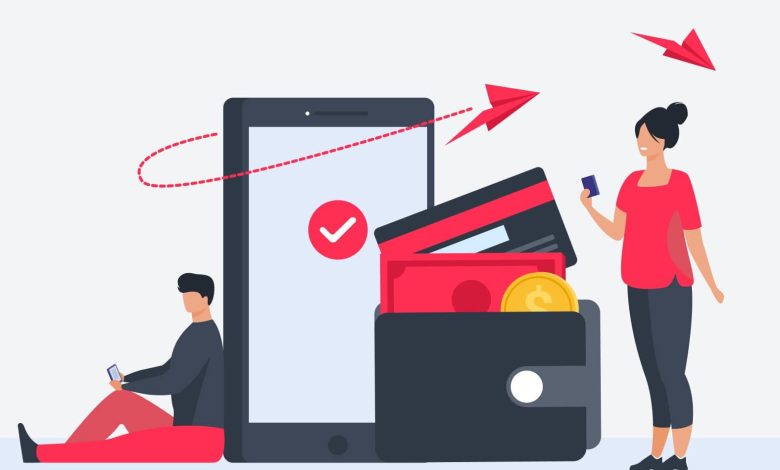How to Make a Mobile Wallet App in the Digital Money World

The mobile payment sector is rapidly expanding. According to research, the market will increase rapidly in the coming years. People all over the world are now switching from physical to digital payments. They are increasingly embracing tech to buy and sell everything from shopping to booking tickets.
According to recent reports, more than 25% of consumers make purchases using smartphones every week. The majority of transactions are conducted through digital or mobile wallet apps.
Moreover, the COVID-19 pandemic has significantly changed the lifestyle of people as well as the way business activities are conducted. The pandemic has accelerated the global adoption of digital wallets, which is expected to reach 70% by 2025. The global demand for payments apps is constantly increasing.
If you have ever wondered how to develop a mobile wallet app, this comprehensive article will explain all you need to know.
Let’s get started!
What is a Mobile Wallet App?
A mobile wallet is a financial platform that enables businesses and individuals to manage their money using their mobile devices. Mobile wallet solutions will contain numerous card details as well as digital currencies such as cryptocurrency and corporate or club membership cards, among other things. Mobile wallets may also be referred to as an eCommerce model wallet because of the convenience and easy access to smartphones.
Types of Mobile Wallet
Closed Wallet
Closed m-wallets are developed for specific purposes, and only the clients of a given company have access to the system. This mobile wallet can only be used with a single merchant.
Semi-closed Wallet
This type of wallet can be accessed both online and offline, but its reach is limited. The semi-closed model is supported by many merchants.
Open Wallet
This mobile wallet operates in collaboration with banks and can be use for shopping, cash withdrawals, money transfers, and ATM transactions. These mobile wallets have access to several banks and can be use by any merchant.
Essential Features of Mobile Wallet App
Mobile wallets are a very competitive sector, and to stand out from the crowd, you’ll need to include important features in your wallet software. Mobile payment applications must include the following features:
Quick Intra-Wallet Payments
Your mobile money payment solution must be able to transfer funds from the payer’s wallet to the payee’s wallet in real-time. If your wallet takes even a minute to send money, you’ll lose a huge amount of customers. Hence, it is an important feature of any mobile wallet app.
User-friendly UI
For users to accept your mobile wallet software, it should be easy to use and pleasing to the eye.
Integration of POS and Gateways
It’s better if your system supports a variety of payment methods. To expand the use of e-wallets even in offline establishments, it’s critical to leverage POS integration ahead of time.
Bank Account Linking
Users can utilize this functionality to conduct transactions and add information like the CVV number, card details, etc. Users may link their cards to their wallets, switch between accounts, and manage their operations all in one place.
Bill Payment
Your mobile payment application must allow individuals to pay for services like utility bills, loans, rent, and mortgages, as well as to conduct peer-to-peer transactions.
Real-time Transaction Update
Provide users with a real-time and accurate transaction history so they can stay informed about their funds and transactions.
Round the Clock Support
If a client has a financial or technological problem, you must act promptly to help them. Hence, provide customers with round-the-clock assistance via email, app messages, chatbots, and other methods.
Multi-platform Support
Multi-platform support is an essential feature for any mobile wallet solution. This functionality enables the software to run on all major mobile devices and platforms.
Robust Security
The most critical element of mobile wallet software is security. When using the app, customers must have confidence that their money is safe and secure. Therefore, provide industry-leading security such as tokenization, two-factor authentication, biometric authentication, OTP, SMS, and end-to-end encryption.
Contactless Payment Technology Integration
Implement contactless payment technology such as QR code & NFC to improve the customer checkout experience.
Additional Features
The features below can aid you to provide the best service to your customers:
- Loyalty Card/Promotional Offers
- Gift Vouchers
- Reward Offers
- Push Notification
- Exclusive Offers
- Geo-Locating
- Back-up Facility
- Membership Discounts
- Review & Ratings
- Wearable & Cloud Integration
How to Develop a Mobile Wallet App?
Conduct Market Research
Market research and competitor analysis are usually the first steps in app development. During this stage, you must understand who your target audience is and what features they are searching for in mobile wallet software. Market research will assist you in conceptualizing your software and determining how to differentiate it from the competitors.
Choose the Technology
Decide whether to include online and cloud solutions, NFC and QR code-enabled payments, NFC card emulation, and other technologies. Moreover, select a platform for your wallet’s back-end programming, hosting, and operation.
App Development Company Selection
If you lack the appropriate in-house technological expertise, you may have to hire a development company to make a mobile wallet app.
Mobile Wallet App Development
The programming procedure occurs during this stage. Designers develop your UX wireframes and UI prototypes into the application, incorporating all essential functionality and adjustments. Keep in mind that digital wallet apps should be design with scalability and security in mind.
App Launch
The most important step in the development phase is the market launch. You must heat up your intended audience with a well-designed publicity strategy in order to create a faithful audience and grow your tribe of satisfied consumers. Provide regular updates and maintenance to offer flawless services to your customers, gaining more valuable features over time.
App Marketing
Once you have launched the app to the market, you must consider app promotion. A modern marketing plan consists of several components, such as social media marketing, content marketing, paid to advertise, and so on.
Cost to Develop Mobile Wallet App
The cost of an app is determine by the solution’s complexity, wallet type, feature set, and a number of supported mobile platforms. A simple app with a limit set of functionality will cost you back at least $25K, whereas a more advanced wallet app like Google Pay or Apple Pay will cost you back at least $100K.
The specified price is for a single platform, the price will be double if you want to develop the mobile wallet app for both iOS and Android platforms.
Conclusion
The future of mobile wallets in the digital money world appears to be promising as people are increasingly preferring mobile-app payment options for all financial transactions. Businesses rely heavily on mobile wallets to conduct transactions.




